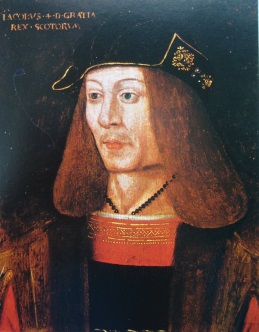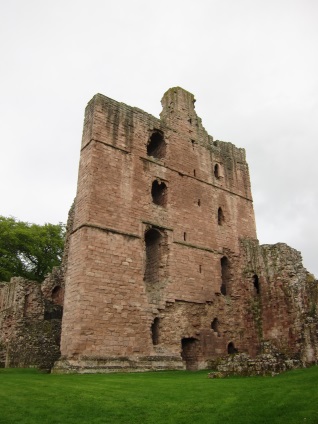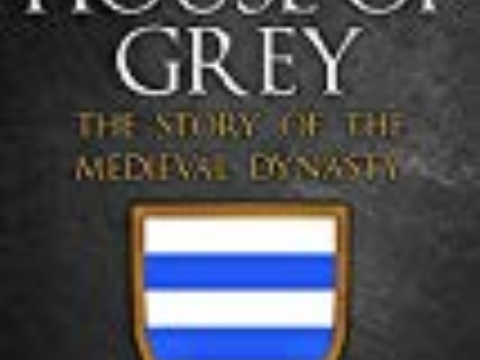European Alliances
Main Players in the Early Years
Chapter 4 : James IV's Alliances
Further north again, in Scotland, James IV, having gained the throne through the overthrow of his father, spent most of his reign bringing the nobles under control and building an efficient and wealthy central government, as well as bringing the Western Isles under the Scottish Crown. Scotland, however, was in long-term alliance with France.

Known as the Auld Alliance, the agreement was one of mutual defence against England. It probably began informally in the 1170s and was then formalised by a treaty signed in 1295 between John Balliol (1249 – 1314) and Philip IV (1268 – 1314) of France.
The Auld Alliance was renewed by every subsequent Scottish monarch, until James VI (1566 – 1625) and all of the French Kings except Louis XI (1423 – 1483).
Over the years, generations of young Scots nobles travelled to France to fight there. During the Hundred Years War thousands of soldiers were provided to the French Crown, under Scots leadership. They formed a significant section of the royal bodyguard – La Garde Ecossaise. Relationships became more than just about war and many Scots chose to remain in France and take French citizenship.
There was also some cultural exchange between the two countries, particularly in adoption of architectural styles. The fairy-tale palace of Holyrood, built by James IV, was heavily influenced by French tastes and French style armour and armourers were paid for by the King. So far as the majority of Scots were concerned, France was their natural ally, and England the menacing enemy. That did not, of course, stop the Scots nobles from conspiring with Kings of England in their efforts to promote their own familial interests!
Scotland was also closely allied to the Scandinavian countries.James III's wife was Margaret of Denmark (1456 – 1486), and James IV kept up an alliance with his cousins who were Kings of Sweden, Denmark and Norway.
Spain was also courting Scotland. At the time of the Treaty of Medina del Campo (1489), there were efforts to detach Scotland from France and include it in the alliance by a marriage between James and Maria of Aragon, one of the other daughters of Ferdinand and Isabel. However this came to nothing, as Maria was sent to Portugal to shore up the alliance there. The Spanish monarchs turned to promoting the proposed alliance between England and Scotland, partly to ensure that their daughter, Katharine, would be safe in her new country. Their Ambassador, Don Pedro de Ayala, played a major part in bringing about the Treaty of Perpetual Peace.

Despite the longstanding alliance with France, in the late 1490s James was keen to ally with England. James had shown Henry VII by his support of Warbeck and his extremely successful border raids into England (one of which resulted in the bombardment of Norham Castle with Henry's own ambassador inside it) that he was a force to be reckoned with.
From a position of strength he could negotiate with England and reduce (if not eliminate) the incessant border warfare that was a drain on money and men and thus the Treaty of Perpetual Peace was negotiated from a more equal position between the two sides than had been the case for previous treaties and ceasefires.
An important component of the Treaty of Perpetual Peace was the agreement that low level Border matters would be dealt with on Truce days by the Wardens of either side, and that individual incidents would not invalidate the Treaty. Naval matters also were outside its scope. In addition, the Treaty of Perpetual Peace did not prevent James from continuing his relationship with France although he did not formally renew the Auld Alliance until 1508.
He renewed it despite efforts by Pope Julius II to discourage it. Julius even sent James a very handsome purple velvet cap of maintenance and sword in 1507, which the King accepted with thanks and a generous present of £700 to the Pope's ambassador. There is a stream of correspondence between the French and Scottish courts in the early sixteenth century, in which the French seek to maintain Scots suspicions of England.
Over the coming century, these alliances would fluctuate as fortunes rose and fell between France and the Empire, and also as the Reformation affected the way rulers thought about allegiances. In particular, England's long-standing relationship with Burgundy's rulers became support for the breakaway Protestant Netherlands against their Duke, the Catholic Philip of Spain.Scotland, too, abandoned the Auld Alliance to embrace (or at least find accommodation with) its southern, Protestant neighbour.
